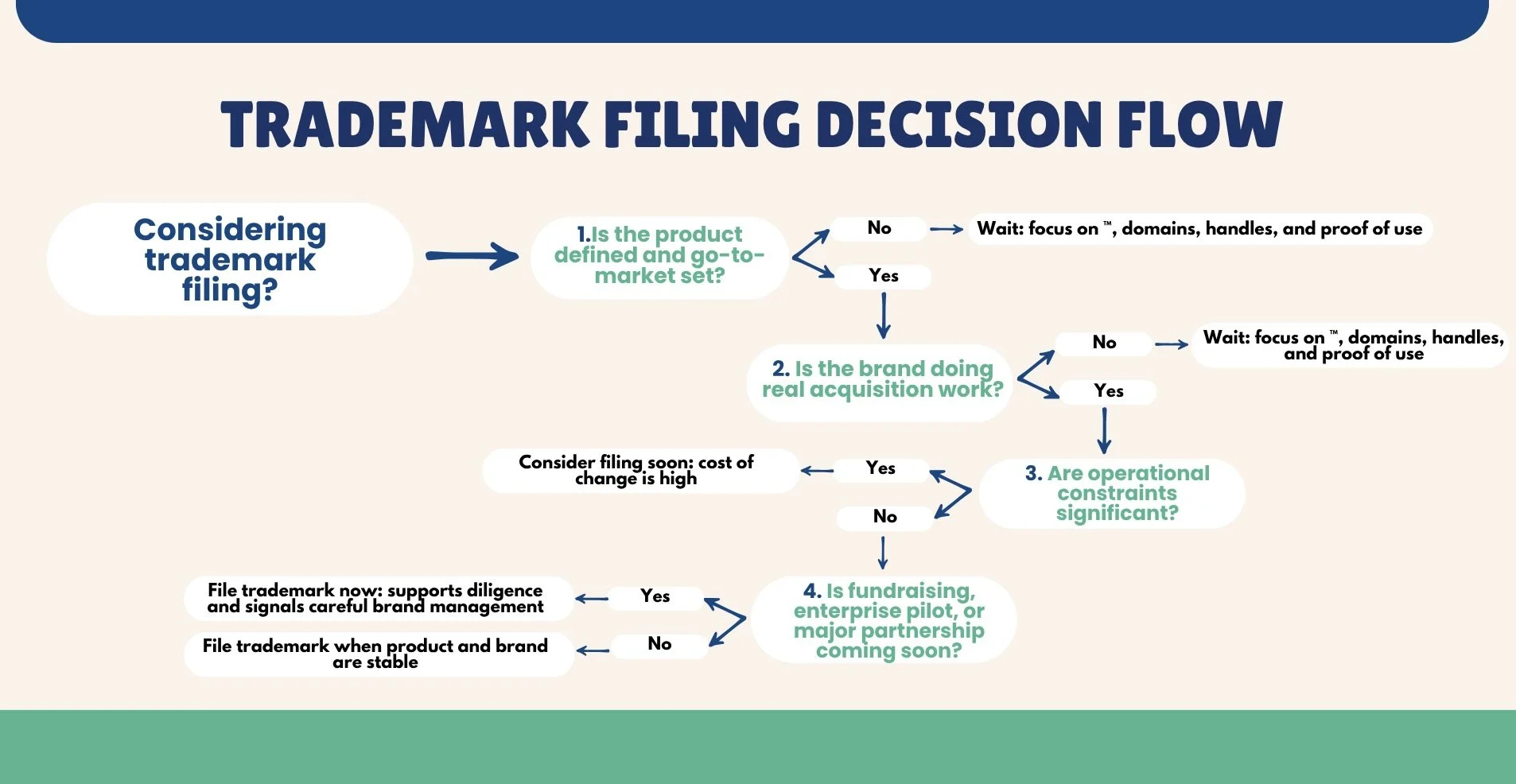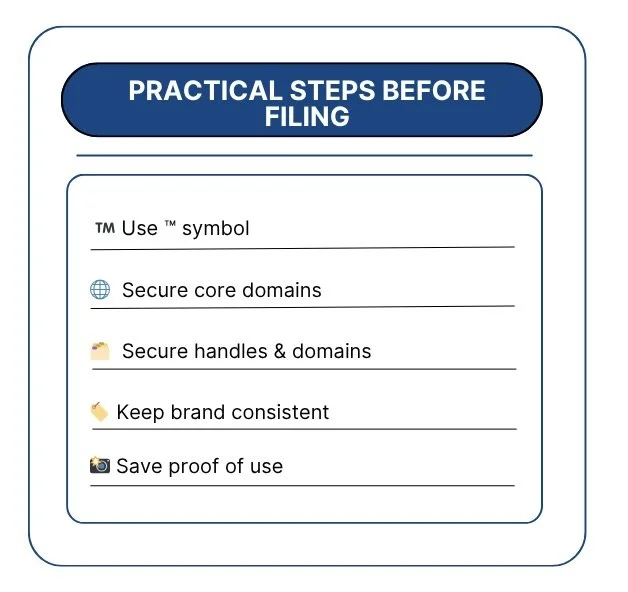Trademark Registration Strategy and Timing
One of the most common questions founders ask is when to trademark their brand. There is no universal best moment. Budget and risk tolerance matter. File too early and you insure a moving target. Wait too long and you invite a costly rename.
I recommend that founders focus on two metrics: the stage of the product and the level of public exposure.
Start with stage and exposure. If you are pre-product, in private beta, or still testing your niche, registration is usually premature. At that point, your research may still push you toward a new name, and an early filing makes change harder than it needs to be. Once the product is defined and the go-to-market is set, timing shifts. When your name appears consistently on the site, deck, and product, and when customers, partners, or press will see it, filing may make more sense.
Next, be honest about how much work the brand name actually does. Some companies grow first on the founder’s reputation or a distribution channel. If customers are finding you through a person or a platform rather than the company name or logo, registration delivers less near-term value. By contrast, if search, social handles, marketplace listings, and word of mouth use the company name directly, the name is doing real acquisition work. That is a signal to move sooner.
Resources and pace matter. If you have capital and you are comfortable refining the brand if needed, an earlier filing can bank priority before visibility increases and reduce the risk of later conflict if a competitor moves first. For budget-conscious teams, the stronger moment is when the product is launch-ready, the name is stable, and the go-to-market relies on that name, especially when social handles and search are central.
Operational constraints can move up your timeframe. If the mark will appear on packaging, hardware, labels, or other long-run assets, the cost of change rises quickly. Software and web properties are easier to rename than printed inventory or devices in a supply chain. If you are about to place packaging orders or submit to an app store or marketplace that will publish the brand, filing before that commitment is rational.
Fundraising is another nudge. A pending application clarifies ownership, speeds diligence, and signals that the brand is being managed deliberately. If a term sheet, enterprise pilot, or major partnership sits inside the next quarter, treat filing as part of deal prep.
Two practical notes on lead time. A proper clearance search is measured in days, not weeks, if you are decisive about the goods and services you plan to offer. The USPTO’s first action typically arrives months after filing, but a pending application still has value immediately: it plants a flag, improves procurement conversations, and discourages obvious copycats.
If you are still early, there is work worth doing now. Use the ™ symbol. Secure core domains, social handles, and relevant marketplace names. Present the brand consistently across your assets and keep dated evidence of use (e.g., screenshots, invoices) so that you can demonstrate priority when you are ready to file.


